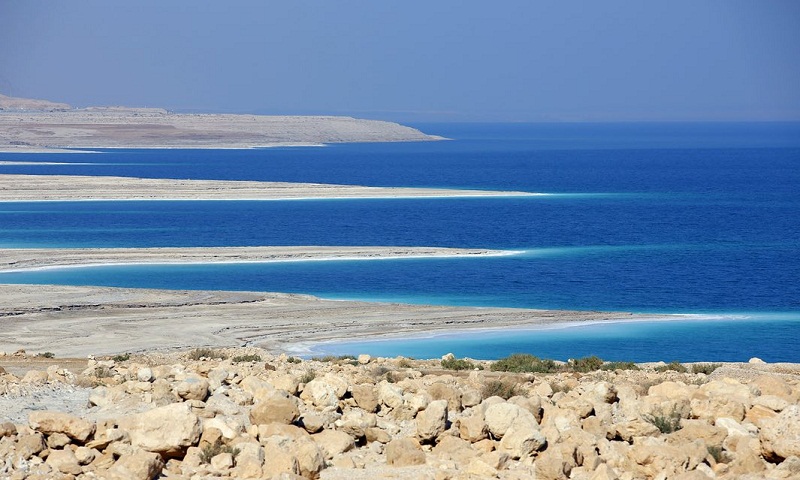Dead Sea evidence of unprecedented drought is warning for future

A 30-metre layer of salt discovered beneath Dead Sea reveals drought worse than any in human history – and it could happen again. Far below the Dead Sea, between Israel, Jordan and Palestinian territories, researchers have found evidence of a drought that has no precedent in human experience. From depths of 300 metres below the landlocked basin, drillers brought to the surface a core that contained 30 metres of thick, crystalline salt: evidence that 120,000 years ago, and again about 10,000 years ago, rainfall had been only about one fifth of modern levels. The cause in each case would have been entirely natural. But in the region where human civilisation began, already in the grip of its worst drought for 900 years, it is a reminder of how bad things could get and a guide to how much worse human-induced climate change could become. “All the observations show this region is one of those most affected by modern climate change and it’s predicted to get dryer. What we showed is that even under natural conditions, it can become much drier than predicted by any of our models,” said Yael Kiro, a geochemist at Columbia University’s Lamont-Doherty Earth Observatory in the US. The Dead Sea is about 400 metres below sea level. It traps water from the Jordan river and has, over millennia, become increasingly saline. In 2010, an international team of researchers drilled almost 500 metres below the deepest part of the Dead Sea bed to bring up evidence of a series of epic bygone droughts, when the trapped water evaporated to precipitate deep, dense beds of salts. One of these, reported in Earth and Planetary Science Letters, coincided with a spell between the Ice Ages more than 115,000 years ago when the Earth’s average atmospheric temperatures rose by about 4C hotter than the 20th-century average. This is roughly the rise predicted by climate change scenarios in which humans go on burning fossil fuels to deposit ever more carbon dioxide in the atmosphere. Rainfall in the region has fallen by 10% since 1950, and could continue to fall this century. In Syria, 15 years of drought are thought to have played a part in triggering the cruel civil war that has displaced millions and created a refugee crisis for Europe, and even briefly masked the entire region in an unprecedented dust storm.
Read More:

